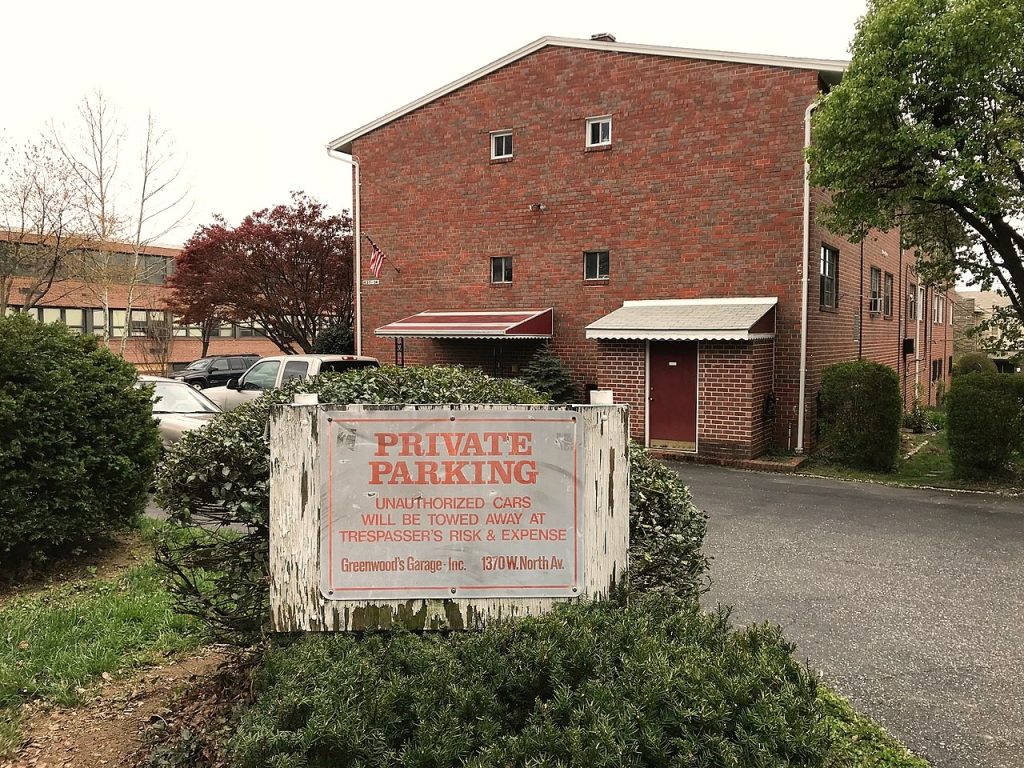
When it comes to renting in Baltimore, there are a few ins and outs to find the best rental for your needs. Here we’ll share best practices for looking for a Baltimore rental, what to look for and ask when you visit potential rentals, and what you need to do after you move in.
Tips for looking for a rental in Baltimore
Decide what you need
Before you start looking up potential rentals, decide on what details are important to you. Do you need a certain amount of square footage? Do you really want your own washer and dryer? Make note of what you need, what you want, and what you can’t stand in a three-column list. As you shop, the needs column will be required in every rental you visit while the wants column will be nice additions.
Determine what you can afford
The average cost of rent in Baltimore is $1,283. The average apartment size is 822 sq. ft. Your needs will largely determine what your rental cost will be (though you may be able to snag a deal), but as you start looking at rentals, you may have to review your list of wants and needs to accommodate your budget.
Look for rentals with parking
If you have a vehicle, then finding a rental that comes with parking is really important. If you don’t have a parking lot or driveway dedicated to your car and your neighbor’s cars, then you’ll have to park on the street, which can be time-consuming and rather annoying.
Be wary of picture-less listings
If a rental listing doesn’t have photos, you may not want to trust it. This is a major red flag, especially if you’re looking on sites like Craigslist.
Look up the location of each rental
Before visiting a rental, be sure to look up the location on your favorite GPS app or the online listing. If a rental is listed on a specific street but the map says it’s on another street, it’s best to move on. You only want to consider honest listings.
Move during the off-season
Interest in Baltimore rentals piques in July, so if you can help it, try to snag a rental before then. The best time to search for rentals and move is between October and March because these months are considered the off-season.
During the off-season, landlords are more likely to negotiate on the cost of rent because they want to avoid long vacancies.

Tips for visiting the rental
Have a check on hand
Before you visit a place to rent or fill out an application, make sure you have a check on hand. While some landlords will accept Venmo or PayPal, most will accept a check. If you don’t regularly have a checkbook, visit your bank or credit union and ask the teller to print you a sheet of counter checks, which are also called starter checks. This sheet usually costs around $2 and includes three checks, which is enough to cover your first month’s rent and security deposit, as well as two other payments.
Be sure to secure these checks. It’s best to keep them in a safe place at home when you don’t need them. When you go to visit the rental, be sure to bring one check with you so you can secure the rental right away if you decide to. Even if they accept other forms of payment, most landlords will accept a check.
Ask what the security deposit is
Most landlords require you to pay the first month’s rent and the security deposit to secure the rental. Typically, the security deposit is the same as the cost of one month of rent. So, if your rent is $1,200 per month, your security deposit will likely be $1,200, which means you will have to pay $2,400 to secure the rental.
However, some landlords require the first month’s rent, last month’s rent, and security deposit, which would cost $3,600 to secure the rental with a monthly rent of $1,200.
When you visit the apartment or house you want to rent, ask the landlord what the security deposit is. Be sure to clarify what forms of payment they accept, too. Some may prefer that you use a specific online site.
Tip: If you plan on purchasing a home in the future, you may want a way to show that you’re a good renter by paying your rent in full and on time, so keep a record of your payments. When the time comes, you can also ask your landlord for a “statement of rent” for the entire period of time you rented from them.
Ask about utilities
When visiting the potential rental property, ask the landlord and other tenants about utilities. What utilities are covered in the cost of rent? What companies are often used? What utilities are not included in the cost of rent?
In Baltimore, you will likely have these utilities:
- Internet
- Electricity
- Water
- Gas
- Home security
Ask about amenities and pets
Does the rental include furniture or access to a fitness center? Ask about what amenities are included in the cost of the rental and what amenities will cost extra. For example, if the apartment you’re interested in allows cats, is that included in the cost of the rental? Or does your landlord charge an additional fee to have your feline friend live in the apartment?
While additional fees aren’t necessarily bad, it’s important to account for them while choosing a rental. You want to include the fees in your budget.
Ask about maintenance
When you speak to the landlord, ask who you can contact for maintenance. If your sink starts leaking, who do you call? If your A/C stops working, how fast will someone fix it?
If you can, ask other tenants how prompt the landlord or an employee comes to fix problems. If other tenants say that they have broken faucets for long periods of time and you don’t know how to fix different things like that, then you may want to consider other rentals.
On the other hand, you may be able to negotiate with the landlord for a lower rent if you are willing to fix things yourself or pay a professional out of your own pocket. Then be sure to budget for those repairs.
Ask about rent increases
Before signing a lease agreement, you will want to find out if your landlord increases the rent every year. You can ask the landlord directly or other tenants.
The average rent increases by about 2% every year, so expect your rent to increase and factor that in your budget. However, you’ll want to be wary of landlords who jack up the cost randomly or often. Consistent rent increases are expected, but unexpected rent increases can be stressful, so try to avoid them.

Tips for after you move in
After you sign the lease agreement and pay your first month’s rent and security deposit, it’s time to move in. While packing up boxes of your belongings and rearranging them in your new space is a lot of work, there a few more things you need to do.
Set up utilities
You should have already asked your landlord or other tenants about what utilities are included and what utilities you need to set up yourself. Start with the utilities you paid for at your last place, if any. Call those companies and ask them if they cover your new location. If they do, ask them to transfer your service. If they don’t, cancel service.
For new utility items, ask neighbors what companies they use. Then call those companies and compare prices before setting up and paying for their services.
Tip: If something gets shut off because you forgot to pay a company for their service, don’t panic. Figure out what company it was by asking your neighbors for who they use. Then call the company and restart service. Learn more here.
Change your address
When you move, you will have to notify the USPS. Complete a Change-of-Address form at this link.
Then be sure to notify other important businesses, including:
- School (if currently enrolled)
- Work
- Bank
- Insurance companies
- Loan agencies
- Medical providers
- Shopping accounts, like Amazon
Get renter’s insurance
Landlords have insurance that covers the apartment building or house you’re living in if it becomes damaged somehow, such as by flood or fire. But landlords cannot have insurance for your belongings. That’s why renter’s insurance is so important. It covers your belongings if they are damaged or stolen.
Renter’s insurance typically covers:
- Your personal property – AKA whatever you own
- Liability – If an accident happens in your apartment, insurance may cover it
- Additional living expenses – If a fire, for example, destroys your apartment building, insurance will cover the cost of living at a hotel while it’s being rebuilt
- Theft – If something of yours is stolen, insurance may cover it, even if that item was stolen outside your home
- Storage units – If you have a storage unit and your items inside it get damaged, insurance may cover part of the loss
- Spoiled food – If your fridge or freezer dies, your insurance may cover the cost of those lost groceries
While you’re notifying your insurance company about your change of address, ask them about renter’s insurance. If you previously had renter’s insurance, now is a great time to update your policy. A new location and space may change your premium.
If you haven’t purchased renter’s insurance yet, contact your local GEBCO agent. They can help you determine the best policy for your needs.
Contrary to popular belief, renter’s insurance is really affordable. Learn more about our renter’s insurance here.


